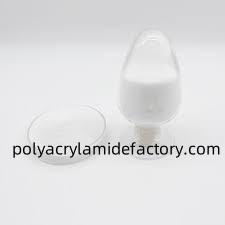Why Choose Polyacrylamidefactory Fracturing Fluid Chemical for Reuse

Fracturing Fluid Chemical reuse is becoming increasingly important in hydraulic fracturing as industries seek more sustainable and cost-effective practices. One of the main technical challenges when recycling flowback fluids is chemical compatibility.
After hydraulic fracturing, flowback fluids return to the surface carrying not only the originally injected additives but also formation water and reaction byproducts. These components can react unpredictably with fresh fracturing fluid chemicals during reuse. Without proper control, such incompatibility can result in emulsion instability, scaling, or reduced fluid efficiency.
When flowback water is reused, leftover additives may interact negatively with new chemicals such as gelling agents, surfactants, or friction reducers. For example, mismatched surfactants can lead to foam problems, while incompatibility between residual salts and polymers may cause viscosity loss or phase separation. These effects may reduce sand transport capability and disrupt pumping operations.
Understanding the chemical profile of recycled fluid is crucial. Operators must evaluate how each new additive interacts with the components already present. This often involves adjusting formulations, changing additive sequences, or introducing stabilizers to preserve system performance.
Proper chemical design allows reuse without sacrificing performance. It ensures fluid stability, maintains proppant-carrying efficiency, and minimizes formation damage. This requires careful formulation using adaptable Fracturing Fluid Chemical products.
At Polyacrylamidefactory, we focus on supporting fluid reuse by offering chemicals formulated with compatibility in mind. Our products are designed to remain effective even when mixed with recycled flowback fluids under varying conditions.
We welcome industry partners looking to improve their reuse strategies through reliable Fracturing Fluid Chemical solutions. Our integrated emulsion systems are formulated to reduce resistance and enhance sand-carrying capacity, even in recycled systems.
Learn more about how we support this effort through custom formulation and application expertise: https://www.polyacrylamidefactory.com/news/industry-news/fracturing-fluid-chemical-integrated-emulsion-for-reducing-resistance-and-carrying-sand.html
- Loja
- Art
- Causes
- Crafts
- Dance
- Drinks
- Film
- Fitness
- Food
- Jogos
- Gardening
- Health
- Início
- Literature
- Music
- Networking
- Outro
- Party
- Religion
- Shopping
- Sports
- Theater
- Wellness


